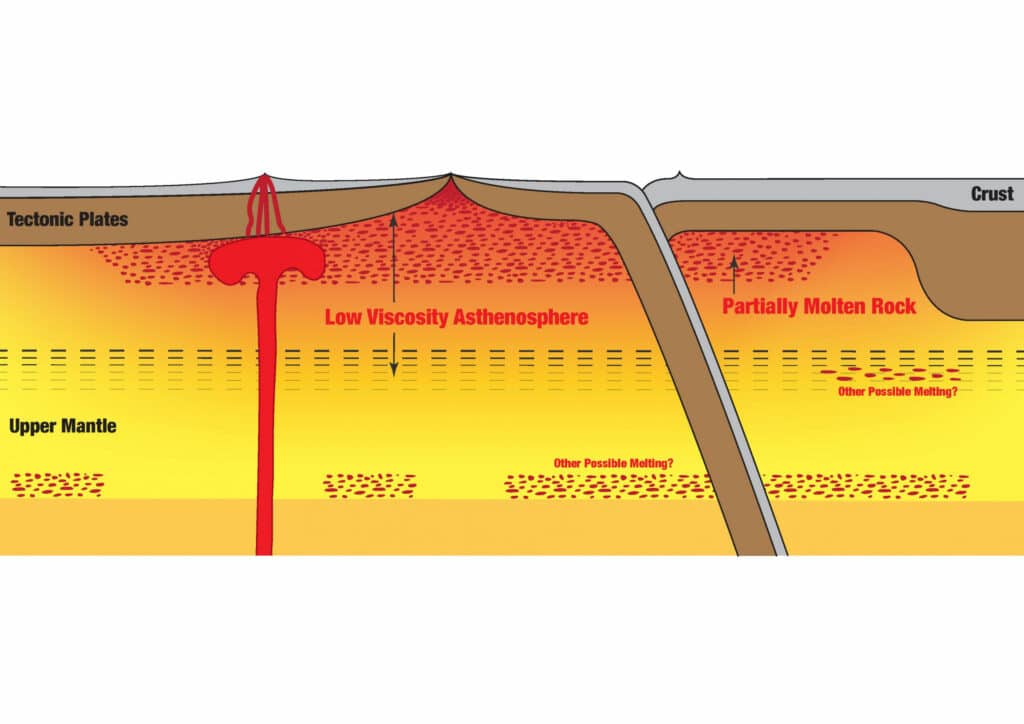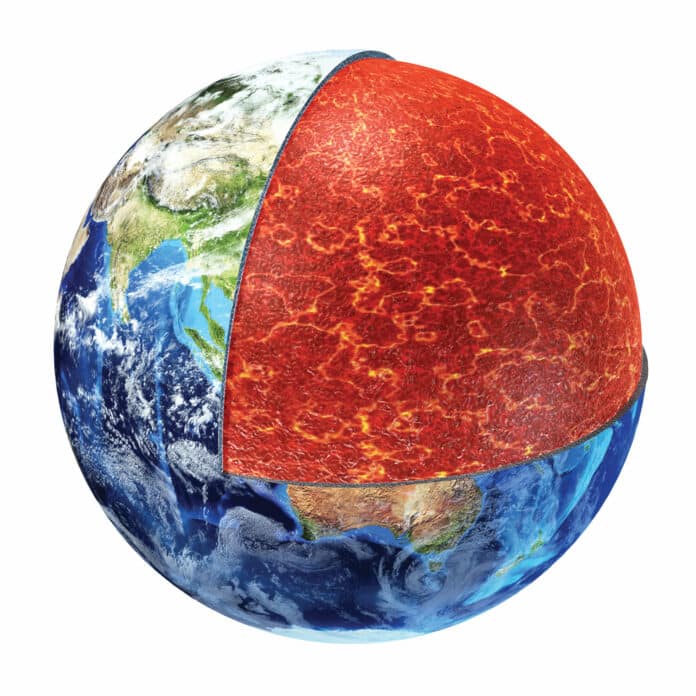The asthenosphere plays a fundamental role in present-day plate tectonics as its low viscosity controls how convection in the mantle below it is expressed at the Earth’s surface above. The asthenosphere’s origin, including partial melting’s role in reducing its viscosity and facilitating deformation, remains unclear.
In a new study, scientists led by The University of Texas at Austin analyzed receiver-function data from globally distributed seismic stations to image the lower reaches of the asthenospheric low-seismic-velocity zone. They discovered a new layer of partly molten rock under the Earth’s crust that might help settle a long-standing debate about how tectonic plates move.
This newly discovered molten layer was located about 100 miles from the surface and is part of the asthenosphere. However, the causes of its softness are not fully known. Previously, scientists hypothesized that molten rocks might play a role. But as this study demonstrates, melt doesn’t seem to impact the flow of mantle rocks significantly.

Junlin Hua, a postdoctoral fellow at UT’s Jackson School of Geosciences who led the research, said, “When we think about something melting, we intuitively think that the melt must play a big role in the material’s viscosity. But we found that even where the melt fraction is quite high, its effect on mantle flow is minor.”
According to the research, the convection of heat and rock in the mantle is the prevailing influence on the motion of the plates. Although the Earth’s interior is largely solid, rocks can shift and flow like honey over long periods.
Co-author Thorsten Becker, a professor at the Jackson School, said, “Showing that the melt layer does not influence plate tectonics means one less tricky variable for computer models of the Earth.”
“We can’t rule out that local melt doesn’t matter. But I think it drives us to see these observations of melt as a marker of what’s going on in the Earth, and not necessarily an active contribution to anything.”
The idea to look for a new layer in Earth’s interior came while studying seismic images of the mantle beneath Turkey during his doctoral research.
Scientists assembled similar photos from other seismic sites after becoming intrigued by indications of partially molten rock beneath the crust. Eventually, they had a global map of the asthenosphere. In reality, what they had thought to be an aberration was widespread, showing up on seismic data wherever the asthenosphere was hottest.
The second surprise came when, despite the molten layer covering over half of the Earth, they compared the melt map with seismic measurements of tectonic activity and discovered no association.
Co-author Karen Fischer, a seismologist and professor at Brown University who was Hua’s Ph.D. advisor when he began the research, said, “This work is important because understanding the properties of the asthenosphere and the origins of why it’s weak is fundamental to understanding plate tectonics.”
Journal Reference:
- Junlin Hua, Asthenospheric low-velocity zone consistent with globally prevalent partial melting, Nature Geoscience (2023). DOI: 10.1038/s41561-022-01116-9
